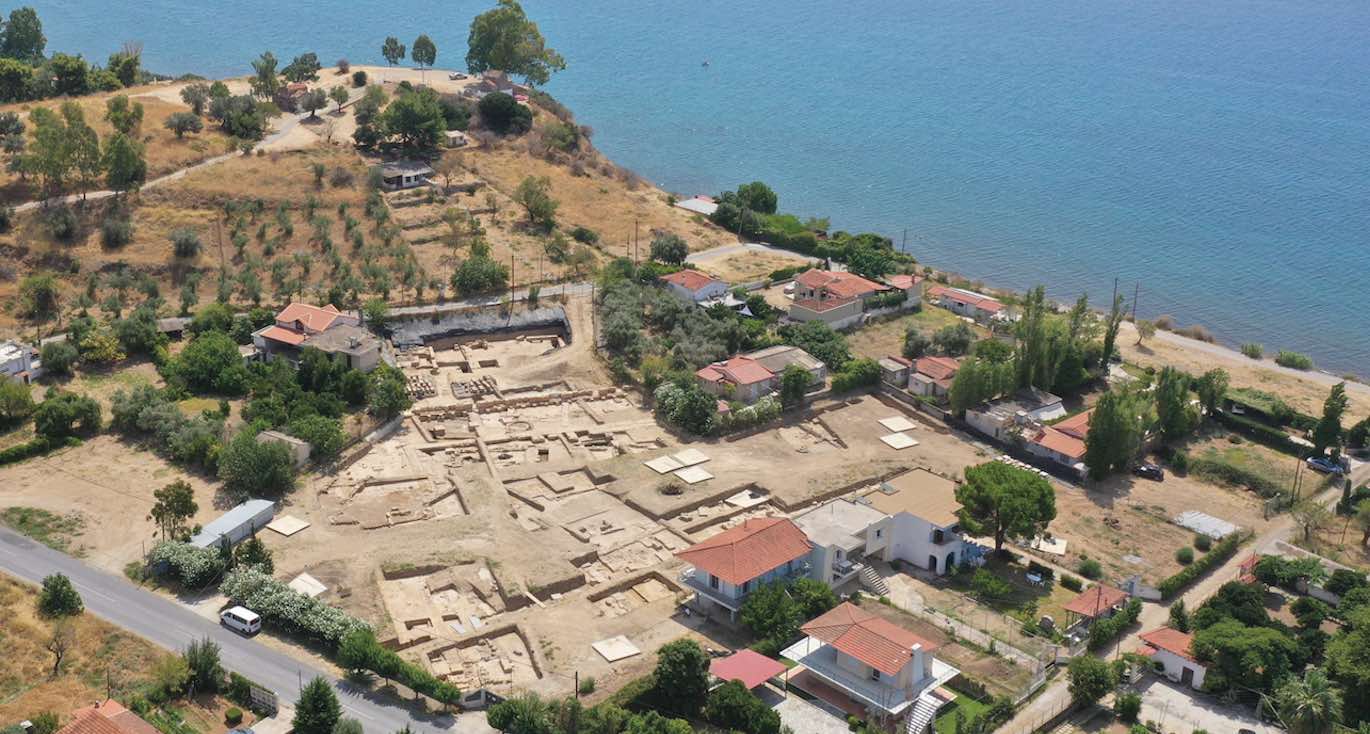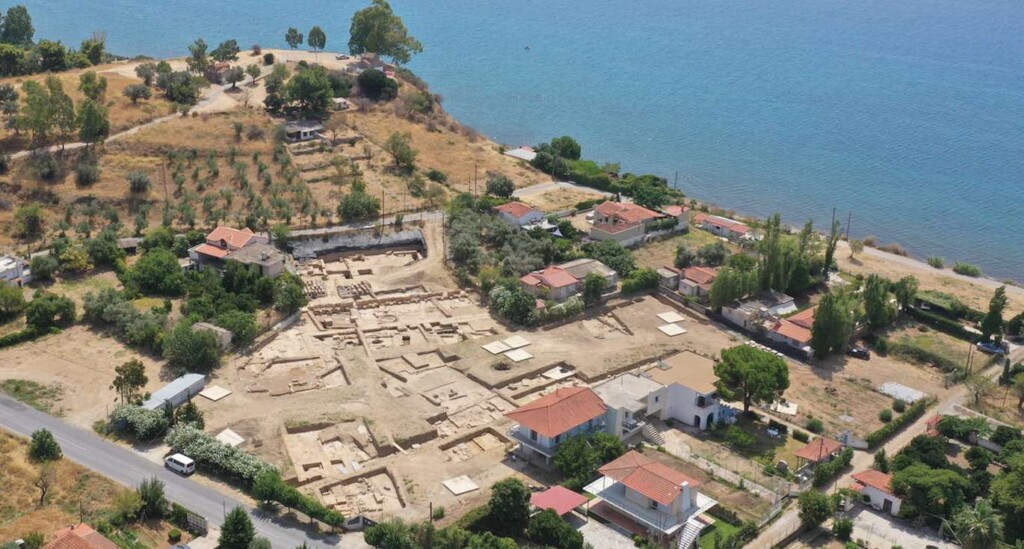
From the magazine of the Archaeological Institute of America comes the story of an immense discovery 120 years in the making.
One of ancient Greece’s most hallowed sites has been uncovered thanks to a determined Swiss archaeologist, a chatty local, and the stroke of luck that brought them together.
The story begins with Strabo, a Roman geographer who gave history’s first account of the Sanctuary of Artemis Amarysia, near the Greek city-state of Eretria on its island of Euboea. (Eretria was one of the earliest city-states and a prolific colonizer of the Mediterranean.)
Several miles from the walls of the city, a magnificent temple complex was built for the worship of Artemis, goddess of the hunt. It was one of the most important sites for ancient Greek religious activities. But, despite its fame and Strabo’s precise location described as seven stades—around 8/10 of a mile—from Eretria’s walls, a flurry of excavation in the late 19th and early 20th centuries uncovered nothing.
Gradually, even the belief that there was such a place called the Sanctuary of Artemis Amarysia came to be questioned, and the quest to find its hallowed walls diminished.
Enter a young doctoral student in classics named Denis Knoepfler, who joined a Swiss archaeological team working in Eretria in the 1960s. By then, efforts to try and find the sanctuary had been ongoing for seven decades, and Knoepler, who told Archaeology Magazine’s contributing editor Jason Urbanus that he had been interested in the history of Eretria for years, decided a new approach was needed if this famous building was ever to be found.
He started by investigating any structure in the surrounding countryside that had reused marble blocks from earlier periods and zeroed in on a 13th-century church built like a patchwork quilt of marble in a town called Vathia. Nearby, earlier excavations had yielded artifacts that depicted Artemis’s form and name, and Knoepfler believed the site of the sanctuary would have been near the sea on a hill called Paleoekklisies, or Old Chapels.
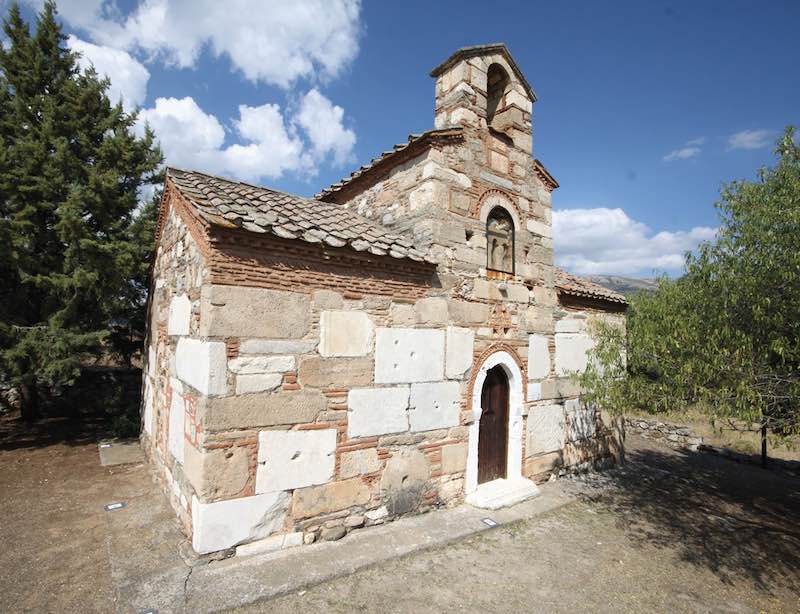
In 1969, he filed a report with the Swiss Archaeological Mission in Greece (ESAG) stating he believed as a result of investigations that the sanctuary “must be” at the foot of that Hill.
So thoroughly did archaeologists working in Eretria believe in Strabo’s account that Knoepfler’s report was largely ignored and never even got published until 6 years ago. However, Knoeplfer continued following his hunch. In the following decades, he demonstrated how medieval monks translating Strabo’s Greek into Latin may have confused the number 7 with 60, because of how Ancient Greek used letters to represent numbers.
Kato Vathia and the Paleoekklisies Hill lay 60 stades away from the walls of Eretria.
As the 20th century gave way to the 21st, a construction boom began at the base of Paleoekklisies Hill, and because nobody had yet found the Sanctuary of Artemis Amarysia, Knoepfler managed to galvanize his department in Switzerland to take his theory seriously and apply for surveying permits before the imagined treasure was buried by modern villas.
MORE STORIES OF TIMELESS DISCOVERY: 13,000 Years Ago, These Ancient Builders Carved a Calendar into Stone to Mark Destructive Occasion
In 2006 they began to excavate on the Paleoekklisies Hill only to find 5,000-year-old artifacts, rather than 2,800-year-old artifacts. The trail seemed to have gone cold, wrote Urbanus in a wonderful feature article for the September edition of the magazine—but in literally the last hours of Knoepfler’s allotted time at the site, a lead materialized from the most unlikely source.
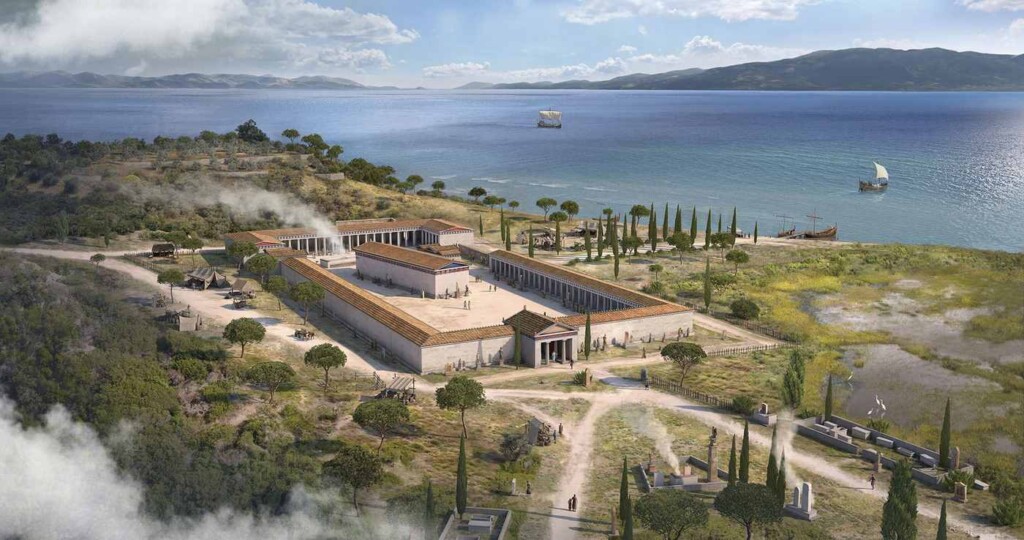
“A local resident approached in a car, rolled down his window, and pointed to a construction site near the base of Paleoekklisies Hill,” writes Urbanus, recounting Knoepfler’s colleague Sylvian Fachard, director of the ESAG who was there at the excavation. “‘You should have a look at that villa that they’re building over there. You’ll find interesting stuff,’” Fachard recalled, quoting the motorist who then drove away.
Among a big pile of pottery, they found a substantial marble block cut with sharp precise angles, which Fachard said was a sure sign the sanctuary must be there, as this sort of masonry is seen only in the most substantial Eretrian structures.
ANCIENT GREEK ARCHAEOLOGY: Greek Archaeologists Use The Iliad as a Map to Find 10 Ancient Shipwrecks
When the two men returned the next day the block had vanished, likely a result of the modern construction ethos throughout Greece, whereby ancient discoveries are often reburied to avoid government confiscation of the land. Knoepfler and Fachard secured another permit to dig nearby and found nothing.
But, much the way the motorist gave them hope when all else had seemed hopeless, the closing stages of their second excavation revealed another clue.
A big hunk of dirt dislodged itself from their excavation trench, and that’s when ESAG archaeologist Thierry Theurillat saw part of a large marble block protruding from the trench wall, nearly seven feet underground.
“It was a second stroke of luck,” Fachard said “If we had put our trench just four inches away, we never would have found a thing.”
16 years later, we now know the Sanctuary of Artemis was found on that day. ESAG bought more than a dozen properties to remove the restrictions on excavating imposed by the private landowners, and many important discoveries of the ancient Greek cult were uncovered.
MORE BIG DISCOVERIES: 2,000-Year-Old Home Found Under a Seaside Playground May Be Pliny the Elder’s Villa
Three colonnaded structures made up the sanctuary, including one that was 225 feet long. In 2017, the first evidence of a temple was uncovered—a terracotta roof tile with the tantalizing word “Artemidos,” meaning “of or belonging to Artemis” embossed in ancient Greek. The next discovery was a makeshift staircase permitting the descent into a nearby well that had been assembled from ancient markers and statue bases, one of which bore an inscription of an agreement made between the city-states of Eretria and nearby Styra “at the Sanctuary of Artemis at Amarynthos.”
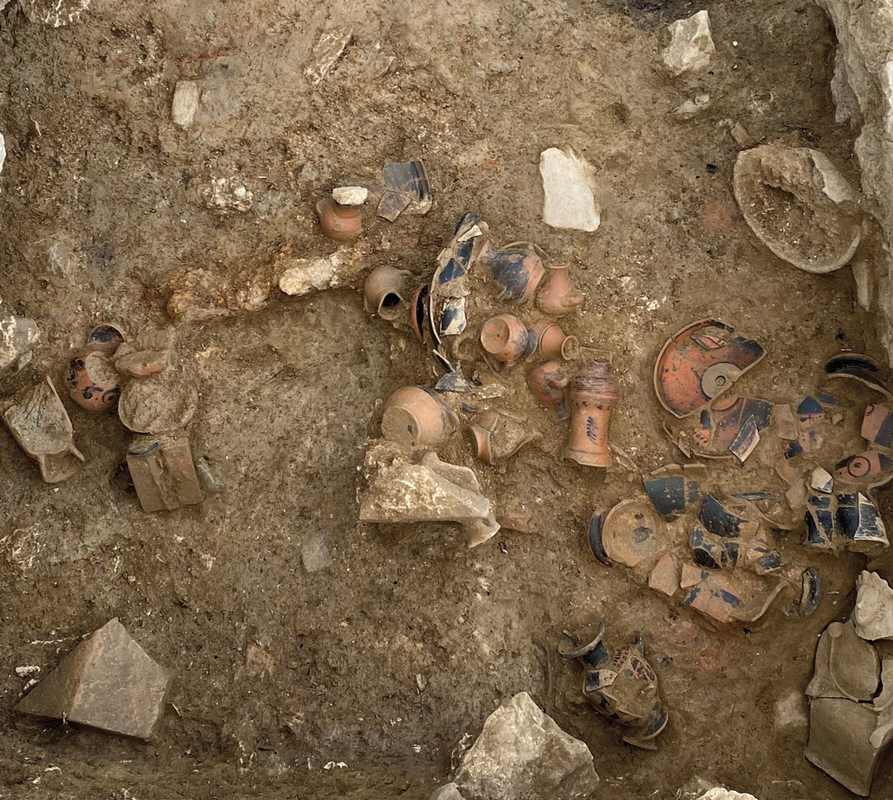
Amarynthos was a Theban word for sanctuary.
Bingo. The 120-year-old mystery had been solved, and as the years of joyful excavating rolled on, ESAG found the temple foundations in 2020 and began exhuming artifacts.
“It’s an unimaginable discovery that impressed us all,” ESAG archaeologist Tamara Saggini told Archaeology Magazine, “on the one hand because of the state of preservation and, on the other hand, because of the size of the deposit, its exceptional variety, and the rareness of many of the objects discovered.”
The working hypothesis is that many of the artifacts were buried in the foundations of the sanctuary after an enormous fire destroyed much of the temple in the 6th century BCE. The builders erected a new temple atop the ruins, sealing all the votive offerings underneath like an ancient time capsule.
YOU’LL BE SURE TO LIKE: 76,000 Gold and Silver Artifacts Recovered from Chinese River Charts Infamous 17th Century Warlord’s Conquests
The dizzying number of treasures include ceramic and bronze vases and vessels of every description, remnants of weapons and armor, jewelry in gold, silver, bronze, amber and ivory, small terracotta figurines, and even the remains of a trunk filled with textiles that were amazingly preserved.
Another standout find was a 16-inch limestone statue of a woman holding a fawn, which might depict a woman offering a sacrifice, or Artemis herself, who is often depicted with deer due to her association with hunting.
“It was a window of literally just a few hours,” Fachard said, thinking back to the tip-off from the motorist. Without that moment, the sanctuary would likely have been lost forever.
SHARE This Amazing Story With Your Friends Who Love This Kind Of Stuff…




















